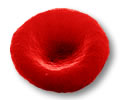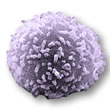The Purpose Of Blood - Its Functions And Composition
 Blood is a red fluid that contains a complex mixture of cells suspended in a liquid matrix which is transported (circulated) throughout the body by the circulatory system of an organism. It circulates around the body by the heart and delivers
Blood is a red fluid that contains a complex mixture of cells suspended in a liquid matrix which is transported (circulated) throughout the body by the circulatory system of an organism. It circulates around the body by the heart and delivers oxygen and other important nutrients to cells of organs and tissues, while at the same time, removing waste product from our body. Blood is located in almost every part of our body, which is due to the network of blood vessels called the circulatory system (see diagram). It is circulated through the body’s heart, arteries, veins and capillaries ( tiny vessels that connect arteries and veins). In order for blood to carry out its functions, it needs to circulate all over our body to all living cells and tissues which it does through the support of the heart that pumps blood throughout our entire body (see diagram of a pumping heart). Thus, it is the fluid of life, a vital life force that all humans need in order to live and sustain life.
oxygen and other important nutrients to cells of organs and tissues, while at the same time, removing waste product from our body. Blood is located in almost every part of our body, which is due to the network of blood vessels called the circulatory system (see diagram). It is circulated through the body’s heart, arteries, veins and capillaries ( tiny vessels that connect arteries and veins). In order for blood to carry out its functions, it needs to circulate all over our body to all living cells and tissues which it does through the support of the heart that pumps blood throughout our entire body (see diagram of a pumping heart). Thus, it is the fluid of life, a vital life force that all humans need in order to live and sustain life.
In this article we will look at the functions and compositions of blood and in some future article of this same category, we will look at Blood Types. This is the logical sequence that has to be taken in order to get a better understanding of blood. Some many articles ago we looked at what causes the sound of your heart beat if you are interested and need an answer to this question, as well as, to understand how the heart functions then you can read this article also.
General function of blood
1. Distribution/Transportation:
Transportation of dissolved gases (carbon dioxide and oxygen), nutrients, enzymes, blood cells (white blood cells 'leucocytes' and red blood cells 'erythrocytes'), hormones and metabolic wastes.
Explanation:
i. Blood carries oxygen from the lungs to the cells of organs and tissues and carbon dioxide from those organs and tissues to the lungs inside our body.
ii. It carries hormones from endocrine glands towards their target cells to the kidneys for excretion.
iii. Blood distributes nutrients absorbed at the digestive tract or released from storage in adipose tissue (a body tissue containing stored fat that serves as a source of energy) or in the liver. These nutrients includes glucose, amino acids, micro-nutrients such as vitamins & minerals), fatty acids and glycerol.
2. Regulation :
Controls and maintain normal pH
The regulation of the pH and ion composition of interstitial fluids (fluid situated between parts or in the interstices of a tissue.)
Explanation:
Maintains the balance of acid-base metabolism as well as, to absorb and neutralize acids that are made by active cell tissues. For example, lactic acid produced by skeletal muscles. The pH of blood must remain in the range 6.8 to 7.4. If it falls out of this range then this will initiate and result in the destruction of cells.
Maintains the stabilization of Body Temperature
Explanation:
Blood gains heat by absorbing the heat generated by active skeletal muscles and from deep seated organs in the body which it redistributes over the body to other organs and tissues. If the body temperature is already high then the heat will be lost at the surface of the skin. Conversely, if the body temperature is very low then the heat will be taken directly to the brain, as well as, to other temperature sensitive organs inside the body.
3. Maintains fluid volume
Explanation:
Salts and proteins in the blood maintain a diffusional gradients to prevent fluid loss from bloodstream. Excess salt is removed from the body in urine.
4. Defense against pathogens and toxins
i. Blood contains different types of white blood cells where each have specific roles in which they fight infections or remove cell debris. White blood cells are always patrolling the circulatory system similar to that of a police to protect the body from harmful pathogens and toxins. When there is an infection or invasion by pathogens, they quickly migrate to the infected area and attack the pathogens or toxins.
ii. There are also antibodies that the blood carries that attack and kill invading pathogens (organism) or foreign compounds.
5. The prevention of blood loss at an injury site(s) - Blood clotting:
Blood contain enzymes and other substances that respond to a break in the wall of a blood vessel by initiating the blood clotting process. This acts as a temporary patch that prevents further loss of blood.
Composition of Blood
Click to view diagarm
 Blood consists of many components (constituents). This unique composition of blood that makes up its volume includes:
Blood consists of many components (constituents). This unique composition of blood that makes up its volume includes:
i. 55% Plasma
and
ii. 45% formed elements , i.e. blood cells and cell fragments (platelets). Of these 99% are red blood cells and the other 1% are white blood cells and platelets.
The diagram shows a test tube containing blood which when left undisturbed separates into a pale liquid called plasma and a solid layer of blood cells.
Plasma
Plasma is mainly made up of water (90-92 %) which is a pale yellow sticky fluid component of the blood. It is the liquid part of the blood and contains significant quantities of dissolved proteins. These plasma proteins are albumins, globulins and fibrinogen- a clotting factor. It also contains chemicals substances such as hormones, antibodies, enzymes, glucose, fat particles, salts, etc.
Function:
i. Provides the medium through which the blood cells are transported around the body
ii. Helps to control the pH of the blood and the body tissues. This provides the right environment in which cell thrive to carry out their roles effectively.
iii. Helps to maintain an ideal balance of fluid volume.
iv. Helps to maintain an optimum body temperature throughout the body of an organism
Blood cells
Blood cells are made in the bone marrow by blood 'stem' cells. There are three types of blood cells.
i. Red Blood Cells (also called Erythrocytes, pronounced: ih-rith-ruh-sytes) These are biconcave shaped cells that look like wheel of a car that has a depressed surface at both its end. This unique surface shape of red blood cells is to maximize its surface area in order to facilitate the carrying of oxygen and carbon dioxide molecules. Their primary function is to carry oxygen from the lungs ( during inhalation) to the cells all around the body and carbon dioxide (a waste product) from the cells to the lung (during exhalation). Here it drops off the carbon dioxide molecules and pick up oxygen molecules and thus, keep repeating the cycle. They do this through hemoglobin (pronounced: hee-muh-glow-bun), an iron containing protein that actually carries the oxygen throughout the body and gives blood its red color. One drop of blood contains about five million red cells.
These are biconcave shaped cells that look like wheel of a car that has a depressed surface at both its end. This unique surface shape of red blood cells is to maximize its surface area in order to facilitate the carrying of oxygen and carbon dioxide molecules. Their primary function is to carry oxygen from the lungs ( during inhalation) to the cells all around the body and carbon dioxide (a waste product) from the cells to the lung (during exhalation). Here it drops off the carbon dioxide molecules and pick up oxygen molecules and thus, keep repeating the cycle. They do this through hemoglobin (pronounced: hee-muh-glow-bun), an iron containing protein that actually carries the oxygen throughout the body and gives blood its red color. One drop of blood contains about five million red cells.
ii. White cells (also called leukocytes, pronounced: loo-kuh-sytes) These cells primary role is to defend the body against pathogens - disease producing bacteria, viruses and fungi. These are colorless cells and that possess a nucleus unlike that of red blood cells. There are different types of white cells such as neutrophils (polymorphs), lymphocytes, eosinophils, monocytes, basophils (See diagarm). They are all part of the immune system and are mainly involved in combating infection. In the blood stream, there are about 600 red blood cells for every white blood cell.
These cells primary role is to defend the body against pathogens - disease producing bacteria, viruses and fungi. These are colorless cells and that possess a nucleus unlike that of red blood cells. There are different types of white cells such as neutrophils (polymorphs), lymphocytes, eosinophils, monocytes, basophils (See diagarm). They are all part of the immune system and are mainly involved in combating infection. In the blood stream, there are about 600 red blood cells for every white blood cell.
iii. Platelets (also called thrombocytes, pronounced: throm-buh-sytes) These are very small cell fragments that are irregularly shaped, colorless with a sticky surface that help in the clotting process by sticking to the lining of blood vessels. Thus, whenever a blood vessel become damaged (tear) their purpose is to prevent loss of blood by clumping together to form a plug to stop bleeding and then secrete other chemicals that help the blood to clot and the blood vessel to be repaired. Platelets are made in the bone marrow and survive in the circulatory system for an average of 9 days before being removed from the body by the spleen.
These are very small cell fragments that are irregularly shaped, colorless with a sticky surface that help in the clotting process by sticking to the lining of blood vessels. Thus, whenever a blood vessel become damaged (tear) their purpose is to prevent loss of blood by clumping together to form a plug to stop bleeding and then secrete other chemicals that help the blood to clot and the blood vessel to be repaired. Platelets are made in the bone marrow and survive in the circulatory system for an average of 9 days before being removed from the body by the spleen.
Some Did You Know Facts of Blood
Some Diseases Of The Blood
Related article:
What causes the sound of your heart beat
More reading on blood cells:
Fun Science
Some Blood Related Sites:
Blood Donation | America's Blood Centers | Blood Journal | United Blood Services | BMC Blood Disorders


 R. Edmondson
United States
R. Edmondson
United States












































17 Comments:
Excellent resource about Blood. Very useful with pictures and I will recommend this site.
Blood Bank in Coimbatore
Wahoo, an update - and a nice one as usual too!
Thanks for the great post.
Take care!
Cream
Hello R. Edmondson, informative as usual. Always easy to understand. Might I ask the question, where do you get the ideas to elaborate on?
I actually think I'm a little bit smart for reading that. I'm going to bookmark your site because I can use your wonderful info in my school studies.
And of course - Hello Michele sent me.
omg... are all your posts like this? if so, i cannot wait to browse your Blog!!!!
I love learning about stuff that i have no clue about! omg... this is awesome...
here from michele's... i am book marking you!
I'm surprised that plasma is only 55% of blood volume. I'd assumed that the cells were taking up less volume.
Michele sent me to your blog to learn some blood stuff!
didn't know that about babies..... cool! :-)
cq
Michele sent me
clicked from knitti's...very informative around here...think i will browse. got anything on broken bones?
kontan jou! (happy day!)
Wow - I learned quite a bit from reading your blog tonight! What a great resource you have here :) I truly enjoyed my visit - learned a lot about blood - and will most certainly bookmark it and return.
Michele sent me here tonight, and I'm glad I got the chance to visit!
Michele sent me. And now I'm out for blood.
I became curious about blood when I was pregnant. I was awed by the fact that pregnancy causes a woman's blood volume to increase up to 50 percent. Also, I was rh-negative and my son had a different bloodtype than I, so I had to get a shot to keep my body from developing antibodies against his blood. The human body is amazingly complex, isn't it?
Your blog's so nice, I posted twice! Enjoy the weekend. (With love from Michele)
Ok, I'll come back and read all this info when I haven't been drinking wine, lol, and can concentrate! :)
Michele sent me!
Great Blog and Great Post. I have Hemophilia so I do know some about blood. But now I can fill in the gaps.
OK, who is Michele? Other than your PR person.
Macmohan:
Thank you very much for the visit and the comment!
I’m please that you found this article resourceful.
Furkids:
Thanks for the complement! Always glad to have you as an regular reader.
Later.
Amstaffie:
Thank you for the compliment! I got my ideas from my wide area of readings over the years and also because of my educational background. I always seeking answers to a lot of things that perplex most of us . Hence, because of this I decided to share my knowledge and understanding with others in a blog format. This is very easy to do than to rant or talk about politics etc.
~A~
Thanks for the visit and also for the bookmark. Glad you find my info. Educational. Thanks.
Killired:
Thanks for the visit and compliment! Glad you found the site interesting. The aim of this site is for visitors to learn stuff that they might find interesting and/or stuff that they always ponder about.
Utenz:
I am glad that you found this article informative and educational. Thanks for the visit and comment.
Craziequeen:
Glad that you have learn something here today! Thanks for the visit.
Knitti-me:
You are welcome and thanks for taking the time to return the favor.
I found it very interesting to know that you are Edmondson and the spelling is the same!! Thanks for letting me know. Maybe we could be related somehow . I wonder if I am your brother-in-law?! - just kidding there :) Seriously though, I will have to start sometime in the future to trace by family tree.
Thank you also for the compliment.
Kotan:
Thanks for the visit and compliment. Unfortunately I don’t have any article with reference to broken bones just yet. Just keep checking out this site, you will never know :)
Stephanie:
Thank you very much for the compliment and visit! I would be more than happy to have you as a regular reader :) I’m pleased that you found my site very educational and informative. Thanks again.
OldHorsetailSnake:
Thanks for the visit. Be careful of vampire slayers
Surcie:
Thank you very much for that warm compliment! Hope to have you has a regular reader :)
You will definitely find (sometime in the future) my post on Blood Type interesting. The human body is awesome and amazing if one studies its anatomy. I agree with you our lovely body is amazingly complex. You will find other articles on the human body by searching the Previous Post and Archive section on my site.
Bye for now.
Tammy:
Thanks for the visit. Why are you giving your blood that extra work? I guess you will feel guilty while reading this info. under the influence of wine, lol.
Bill:
I am sorry to hear of your condition. Thanks for the visit and compliment. I’m glad you found this article useful and informative.
Michelle provides through her blog the opportunity where readers on her site visit each other site.
Later.
nice page i needed it for a project fr sicence this was a Big help!
This was a spectacular passage.It really helped me with i project i was workin on. and i didnt know that luekemia was a blood disease so im glad i learned somthing.
Thank-You
Post a Comment
<< Home